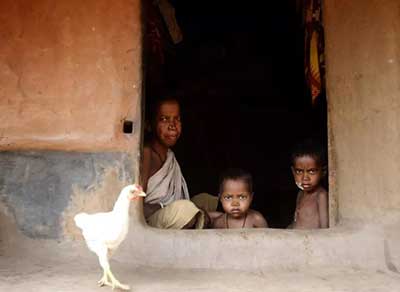Date: 31/03/2023
Relevance: GS-2: Welfare schemes for vulnerable sections of the population by the Centre and States and the performance of these schemes; mechanisms, laws, institutions and Bodies constituted for the protection and betterment of these vulnerable sections.
Key Phrases: Localised Benchmarks, Malnutrition, WHO, National Family Health Survey, Undernourished, Genetics, Indian Urban Middle Class, Stunting, Socio-Demographic Characteristics.
Context:
- Child malnutrition is a major concern in India, and according to
the National Family Health Survey, over 30% of children under the age of
five in India are affected by malnutrition.
- The current method of measuring malnutrition is through the use of WHO growth charts, but there are significant limitations to using these charts globally.
Key Highlights:
- While globally, the measurement of child malnutrition is done using growth charts, India still relies on the WHO-recommended growth charts.
- However, these charts do not consider geographical and other
factors that can affect growth patterns.
- Recent studies have also shown the overestimation of stunting while using the WHO standards compared to the locally-developed IUMC reference.
- Hence, there is a need to re-examine the growth measurement criteria in India and adopt localised benchmarks for better assessment of malnutrition.
The Need for Customised Standards:
- The WHO growth charts were based on data collected from children with unconstrained growth from six countries, including India but the samples were predominantly drawn from affluent neighbourhoods of South Delhi.
- It was standardised using the data from the six countries
assuming that genetics and other geographically specific factors do not
impact growth patterns.
- However, several studies have shown differences in growth patterns based on genetics, environment and socio-demographic characteristics.
- For instance, in France, the use of WHO growth charts would lead
to the classification of most children as having slow growth during the
first three months of life.
- The difference in estimating malnutrition in West Java, Indonesia using the WHO and Indonesian standards is a staggering 40%.
- This highlights how the assessment of malnutrition using the WHO standards can lead to both overestimation and underestimation in different population groups.
Importance of Localised Benchmarks:
- The Indian Urban Middle Class (IUMC) reference is a locally-developed growth chart that provides a more accurate assessment of malnutrition compared to the WHO growth charts.
- The stunting prevalence in India was found to be 24% when using
the IUMC reference, compared to the WHO-recommended MGRS-based prevalence of
33%.
- Similarly, the prevalence of wasting was 9% and 19% using the IUMC reference and MGRS respectively. The disaggregation of data allowed for State-wise measurement of stunting based on more localised benchmarks.
- Revising the growth measurement criteria in India can also help give reliable estimates for defining malnutrition standards in different population groups across the nation.
- The policy should aim to adopt standards customised to specific situations. For instance, the US recommended the WHO standards for children aged less than 24 months, while the UK adopted it for children between two weeks and 48 months based on studies.
- Continuous evaluation of growth charts is also important to keep
up with the rapid socio-economic changes happening across the country.
- In Korea, national growth charts are revised every 10 years to keep up with these changes.
Challenges in Adopting Localised Benchmarks:
- One of the major challenges in adopting localised benchmarks is collecting representative data from diverse geographical regions, socio-economic groups, and ethnic backgrounds.
- Standardising methods for data collection, processing and analysis, building capacity in data collection and analysis and the costs involved in the exercise are other challenges.
Conclusion:
- Adopting localised benchmarks for assessing malnutrition in children is crucial for accurate identification of the outliers and tracking missed cases.
- Re-examining the growth measurement criteria in India is needed to improve the nutritional status of children, prevent false diagnoses, and avoid the introduction of formula feeding, which is contrary to the recommendation of exclusive breastfeeding for the first six months.
- The success of achieving SDG 2.2 by 2030, which is to end all forms of malnutrition, depends on adopting these critical metrics.
Source: The Hindu BL
Mains Question:
Q: Discuss the importance of localised benchmarks for assessing malnutrition in India. What challenges may arise in adopting such benchmarks, and how can they be overcome? (250 words).






















